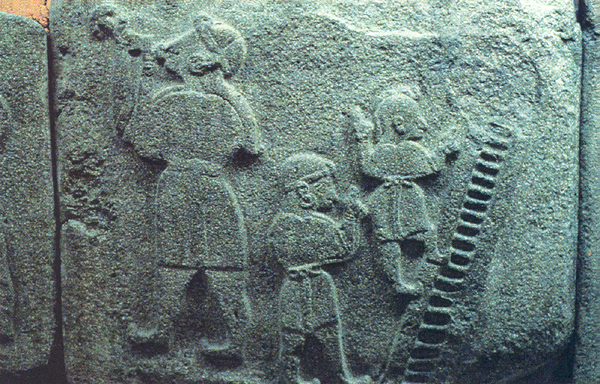Ancient Life: Comic Relief?
Sword swallowers, acrobats and public festivals in the time of the Hittites


In his 1920 exposé on magic, Miracle Mongers and Their Methods, the great magician and debunker of magic Harry Houdini traced the art of sword swallowing back to the carnivals of 18th-century England. Some 1,600 years earlier, the Roman writer Apuleius of Madaurus claimed the practice was invented by the ancient Greeks and Romans. The Hittite relief shown here, however, suggests that sword swallowing has been around a lot longer than even Apuleius suspected.
The mid-second-millennium B.C. relief—which adorns the Sphinx Gate at the Hittite city of Alaca Hüyük in north central Turkey—depicts an intrepid performer forcing a blade down this throat. To the right, two acrobats ascend an unsupported ladder.
The 4-foot-high panel is part of a program of reliefs depicting a procession in honor of the Hittite storm god. The gate’s central panel shows a group of priests leading sacrificial animals to an altar, where a Hittite king and queen stand worshiping the storm god (who has taken the form of a bull). The panels depicting the sword swallower and acrobats are tucked away near the southwest corner of the gate, alongside images of a dancer, a guitar player and other figures from the tail end of the procession.
Already a library member? Log in here.
Institution user? Log in with your IP address.

